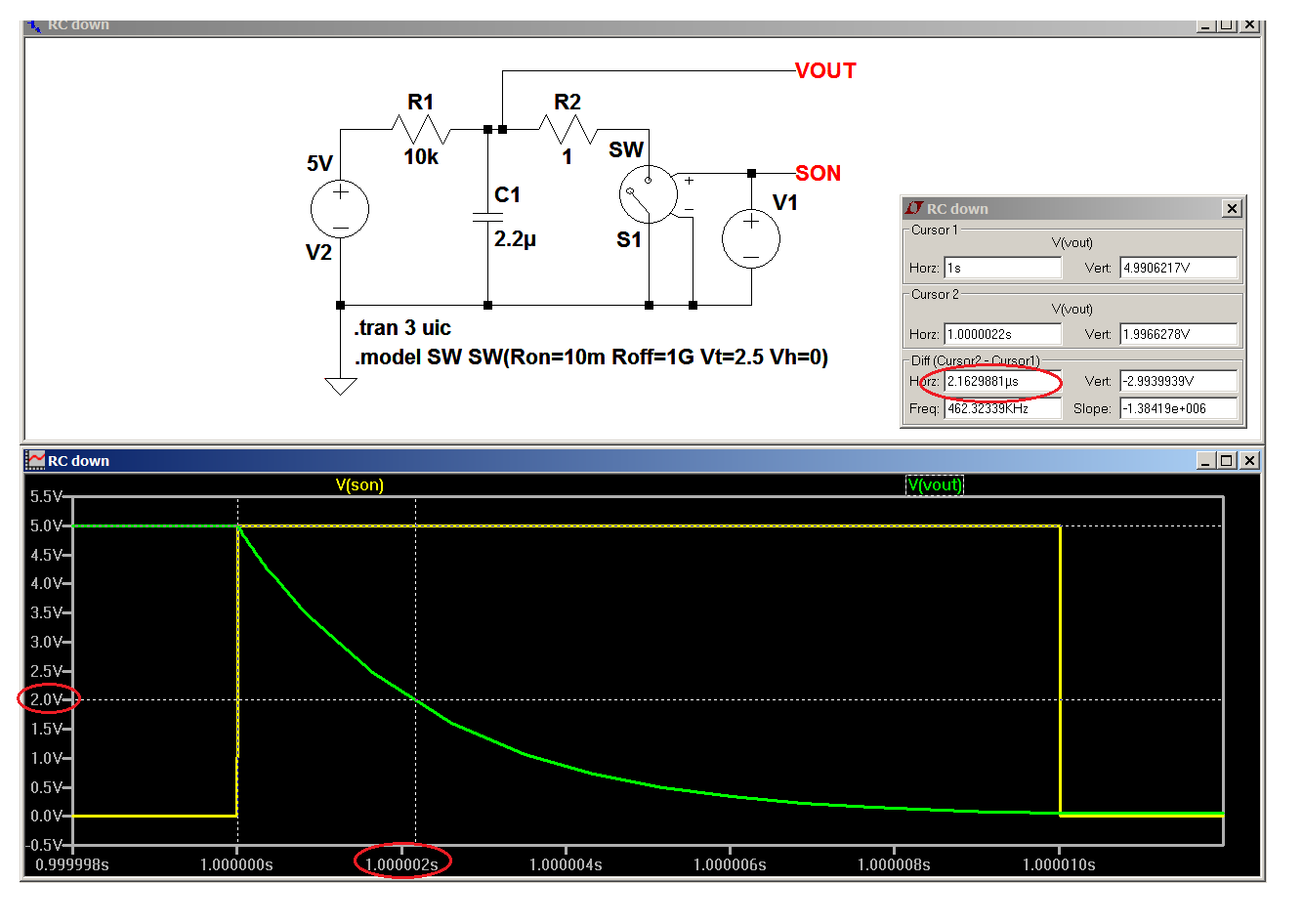Since a Schmitt trigger exhibits hysteresis on its input, let's say - just for the purpose at hand - that the high trigger point (Vt+) is 3 volts and the low trigger point (Vt-) is 2 volts with Vcc equal to 5 volts.
Then, when Vcc first comes on, we'll want the cap to charge up to Vt+ in 20 milliseconds, and when the switch is made we'll want the cap to discharge to Vt- as quickly as possible; let's say 2 microseconds.
The charge time of the cap is given by:
$$\text t = \text {kRC}$$
Where t is the charge time in seconds, R is the resistance in ohms, C is the capacitance in Farads, and
$$\text{k = ln}\ \ \frac{\text {Vcc}}{\text {Vcc-Vt+}} = \text{ ln}\ \ \frac{\text {5V}}{\text {2V}} =\text {0.92} $$
Then, arbitrarily choosing 10k\$\Omega\$ for R and rearranging to solve for C, we have:
$$\text C = \frac{\text t}{\text {kR}} =\frac{\text {20ms}}{\text {0.92}\times{\text{10k}}\Omega} = \text {2.2 microfarads} $$
This is borne out by:

Now, if we let the cap sit for a while it'll charge up close enough to 5 volts to call it 5 volts, and now what we want to do is discharge it to 2 volts in 2 microseconds.
Then, since we have 5 volts across the cap and we want to discharge it by 3 volts, "k" stays the same and we can write:
$$\text R = \frac{\text t}{\text {kC}} =\frac{\text {2} \mu \text{s}}{\text {0.92}\times\text{2.2}\mu \text{F}} \approx \text {1 ohm} $$
The current out of R1 is dropping a little voltage across R2, which is keeping C1 from discharging as quickly as it could if that current wasn't there, and, if it matters, R1 could be made larger and C1 smaller, or the value of R2 could be fiddled with.





